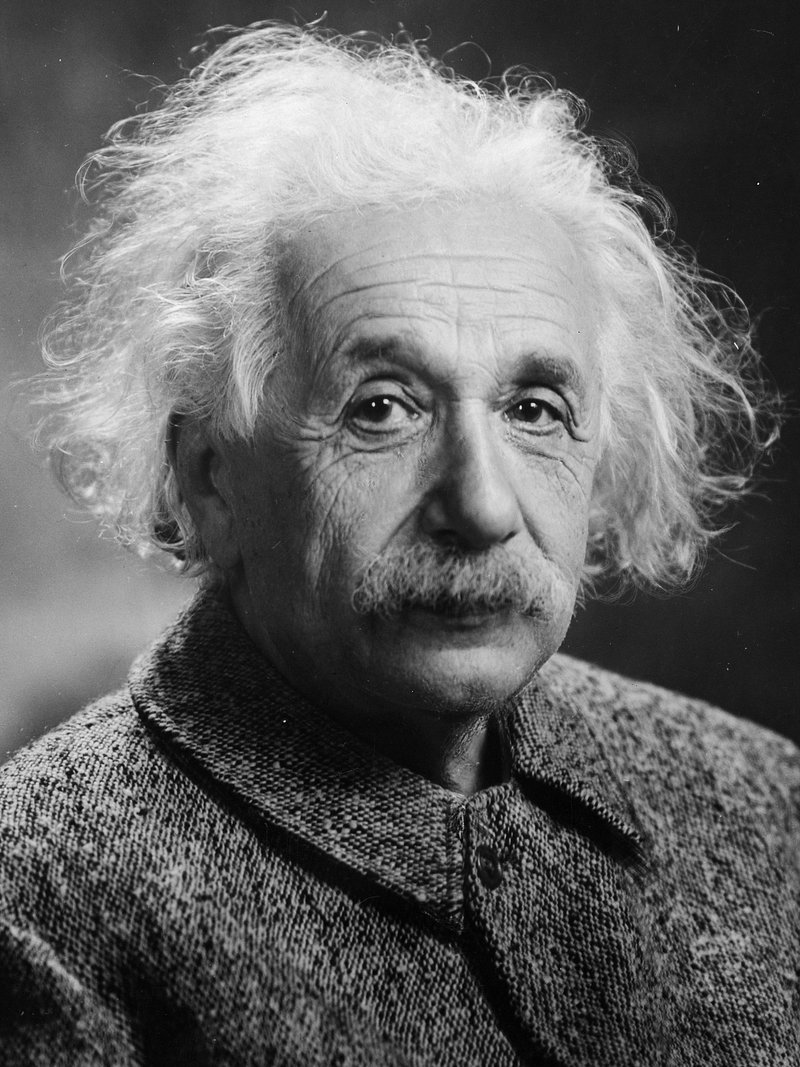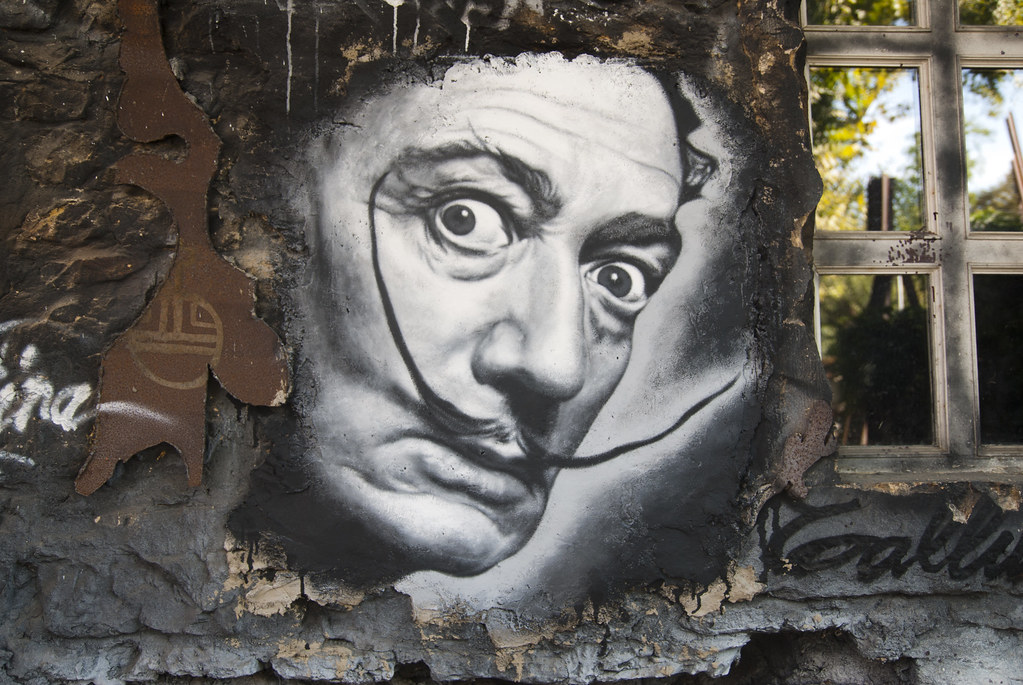
In the vast expanse of visual art, iconic portraits serve as timeless tokens of history, capturing not just a moment but the very essence of individuals who have profoundly shaped our world. These images are more than mere photographs; they are windows into the souls of the figures they represent, speaking a universal language that transcends time and geography. Each face framed, every personality captured, tells a unique story that resonates through the corridors of time, sparking discussions and inspiring generations.
From dignitaries and celebrities to world-changing revolutionaries, every figure who has made a dent in history has been immortalized through iconic portraits. These visual narratives, often captured by legendary photographers like Annie Leibovitz, Richard Avedon, and Steve McCurry, possess a magical ability to frame personalities, coupled with an aesthetic understanding of light, color, and shadows that grants them legendary status. What truly sets these images apart is their prowess in presenting subjects in their authentic essence, portraying a persona that is not only recognizable but deeply connected to their individuality and the broader human experience.
This collection dives into the stories behind some of the most iconic portraits throughout history, exploring how a single photograph can ignite global conversations, shape public perception, and cement a legacy. We will examine the circumstances of their creation, the unique qualities of the individuals depicted, and the profound impact these images have had on society, encouraging learners to think critically about societal issues and the influence of powerful visuals.

1. **Audrey Hepburn (1961) by John Kobal**: Audrey Hepburn, an actress whose name became synonymous with elegance and grace, is immortalized in a famous press shot from 1961, captured by John Kobal. This portrait emerged from the production of “Breakfast at Tiffany’s,” a film that itself became a cultural touchstone and cemented Hepburn’s status as a fashion icon and cinematic darling. The image encapsulates her unique blend of sophistication and approachable charm, qualities that endeared her to audiences worldwide and made her an enduring figure in the golden age of Hollywood.
Her portrayal of Holly Golightly in “Breakfast at Tiffany’s” resonated deeply, and this portrait, taken around that time, perfectly mirrored the character’s blend of vulnerability and audacious style. The image showcases her slender silhouette, perhaps adorned with pearls and a distinctive coiffure, creating a visual shorthand for chic modernity. It wasn’t just a photograph of an actress; it was a snapshot of a cultural moment, influencing fashion trends and establishing new benchmarks for feminine allure that continue to be referenced today.
The global conversation sparked by this single photo centered around redefining beauty and style, moving away from more overtly glamorous archetypes towards a more refined, understated elegance. Hepburn’s unique look and the persona she projected in this and other roles encouraged discussions about the evolving image of women in media and society. It championed a kind of inner radiance that transcended superficial trends, making her not just a movie star but a genuine style arbiter whose influence remains palpable decades later.
This iconic image served as a powerful symbol of sophisticated glamour, demonstrating how film and celebrity imagery could profoundly impact public aesthetics and aspirations. It offered a compelling visual narrative of a woman who was both aspirational and relatable, inviting admiration and fostering countless dialogues about individuality, cinema, and the timeless appeal of true elegance. The photograph continues to inspire fashionistas and film enthusiasts alike, proving its indelible mark on the collective consciousness.

2. **Salvador Dalí (1942) by Philippe Halsman**: Salvador Dalí, the Spanish maestro of surrealism, is perhaps as famous for his striking and bizarre artistic creations as he is for his own flamboyant persona. A portrait captured in 1942 by Philippe Halsman perfectly encapsulated this unique individuality, presenting an artist who was undeniably himself, both in his art and his public image. Dalí’s iconic, upturned moustache, reportedly influenced by the 17th-century Spanish master painter Diego Velázquez, became a visual signature, an extension of his audacious artistic spirit.
This photograph, though details of its specific content beyond the individual are not provided, undoubtedly played into Dalí’s carefully constructed public identity. His surrealist work, characterized by dreamlike imagery, meticulous detail, and a deliberate subversion of reality, was groundbreaking. The portrait, much like his art, challenged conventional perceptions and invited viewers into a world where the unexpected was the norm. It presented a man who was unafraid to be different, to push boundaries both on canvas and in personal expression.
The global conversations ignited by Dalí’s image, and indeed his entire artistic output, revolved around the nature of reality, creativity, and individuality. His work prompted discussions about the subconscious mind, the power of imagination, and the very definition of art itself. This particular photograph, capturing his distinctive gaze and legendary facial hair, became a visual shorthand for his genius and eccentricity, an easily recognizable symbol that transcended language barriers and artistic movements.
In an era when artists were often expected to conform, Dalí’s portrait declared a fierce independence, inspiring many to explore their own creative depths and question the status quo. The image facilitated a broader understanding and appreciation for surrealism, making it accessible even to those not deeply immersed in the art world. It underscored the idea that an artist’s personality could be as much a part of their legacy as their masterpieces, sparking ongoing dialogues about the intersection of art, identity, and cultural impact.
3. **Humphrey Bogart (1938-1939) by George Hurrell**: Humphrey Bogart, a true mega-star of Hollywood’s golden age, remains an enduring icon, perhaps best known for his unforgettable role in the classic movie “Casablanca.” A portrait by George Hurrell, taken between 1938 and 1939, perfectly captures the rugged charm and enigmatic intensity that defined his screen persona. Hurrell, renowned for his glamorous celebrity shots, managed to distill Bogart’s essence, presenting a figure of understated cool and profound gravitas that resonated deeply with audiences.
This photograph predates the release of “Casablanca” but already hints at the qualities that would make him a legend: the piercing gaze, the slight asymmetry of his mouth, and an aura of world-weariness mixed with an unyielding moral code. It’s an image that speaks volumes without uttering a single word, embodying the archetype of the tough but principled anti-hero that Bogart so masterfully perfected. This visual shorthand became integral to his cinematic identity, defining a generation’s idea of masculine appeal.
The global conversation sparked by Bogart’s image, particularly as it became intertwined with his roles in films like “Casablanca,” revolved around themes of heroism, sacrifice, love, and disillusionment during wartime. His stoic demeanor in the face of adversity, his quick wit, and his underlying vulnerability, all subtly conveyed in his portraits, invited deep admiration and discussion. People debated the nature of moral choices and the complexities of human relationships, often projecting these discussions onto Bogart’s iconic characters.
The Hurrell portrait, like many others of Bogart, became a symbol of cinematic excellence and enduring cool. It solidified his place not just as an actor, but as a cultural phenomenon whose image transcended individual films. The photograph continues to serve as a benchmark for timeless acting and compelling screen presence, reminding us of the profound impact a single personality, captured masterfully, can have on our collective imagination and the dialogues we engage in about art and life.

4. **Winston Churchill (1941) by Yousuf Karsh**: Sir Winston Churchill, the indomitable British statesman and wartime leader, is etched into history through a myriad of images, but none perhaps as iconic as the one taken by Yousuf Karsh in 1941. This legendary portrait, often referred to as “The Roaring Lion,” was shot in the Parliament Buildings in Ottawa, Canada, under rather unique and memorable circumstances. The story behind the photograph adds an extra layer of intrigue and power to the final product, solidifying its place in visual history.
According to the anecdote, Karsh had annoyed Churchill by taking away his cigar, a signature prop for the Prime Minister, just moments before snapping the picture. This deliberate provocation resulted in Churchill’s famously stern, almost defiant expression—a look of palpable irritation mixed with unyielding resolve. The photograph perfectly captured the fierce determination and strength of character that defined Churchill’s leadership during one of the most tumultuous periods of the 20th century, as Britain stood against the Nazi regime.
This single photo immediately sparked global conversations about leadership, resilience, and the spirit of defiance. In a world gripped by war, Churchill’s portrait became a powerful symbol of unwavering resolve, communicating an unspoken message of resistance and courage to Allied nations and citizens alike. It conveyed the gravity of the situation, yet simultaneously projected an image of a leader who would not bend or break, offering a source of strength and inspiration in dark times.
The image’s impact extended far beyond a mere depiction of a political figure; it became an emblem of national spirit and international alliance. The “Roaring Lion” captured the mood of an era and the essence of a leader who galvanized a nation. This photograph continues to be a point of discussion when examining wartime leadership, the power of visual communication, and the enduring legacy of figures who shape global events. It stands as a testament to the fact that a single, powerfully composed image can articulate volumes about character, circumstance, and conviction.

5. **Sigmund Freud (1920) by Unknown**: Sigmund Freud, the pioneering Austrian neurologist, stands as the towering founder of psychoanalysis, a revolutionary clinical method for treating psychopathology through dialogue between a patient and a psychoanalyst. While the specific photographer behind his 1920 portrait remains largely unknown, the image itself became synonymous with intellectual depth, profound introspection, and a radical new way of understanding the human mind. This visual representation cemented Freud’s status as a formidable intellectual figure, whose theories would fundamentally alter the landscape of psychology, literature, and culture for decades to come.
His groundbreaking work introduced concepts such as the unconscious mind, repression, the Oedipus complex, and the significance of dreams, which were both intellectually stimulating and fiercely controversial. The portrait, often depicting him with a serious, contemplative gaze, reinforced the public perception of a man deeply engaged in unraveling the mysteries of human behavior and the subconscious. It served as a powerful visual anchor for his complex and often challenging ideas, making his intellectual presence tangible. This image, therefore, rapidly evolved into a potent emblem of intellectual revolution and psychological inquiry.
The global conversations sparked by Freud’s portrait, inextricably intertwined with his pervasive theories, were nothing short of transformative for Western thought. Discussions erupted across academic and public spheres about the hidden drivers of human actions, the formative influence of childhood experiences, and the very nature of identity, desire, and neurosis. This iconic image became a recognizable symbol for a new era of self-discovery, inviting intense debate and reshaping societal views on mental health, sexuality, and the personal narrative of human development. It bravely challenged conventional morality and encouraged a deeper examination of the individual self.
His influence extended far beyond the realm of medicine and clinical practice, permeating art, philosophy, literary criticism, and everyday language. Phrases derived from his pioneering work, such as “Freudian slip,” “ego,” and “subconscious,” rapidly became common parlance, indicating the widespread adoption and integration of his analytical framework into popular culture. The portrait itself, a silent yet eloquent representation, facilitated the widespread dissemination of these profound concepts, making Freud’s iconic visage a shorthand for the intellectual earthquake he precipitated. It continues to prompt discussions about the enduring legacy and ongoing relevance of psychoanalytic thought in understanding the multifaceted complexities of the human condition.

6. **Marilyn Monroe (1954) by Matty Zimmerman**: Marilyn Monroe, the quintessential blonde bombshell and an unparalleled Hollywood icon, is eternally captured in one of the most famous images of the 20th century. This specific still, taken by photographer Matty Zimmerman, features a pivotal scene from the 1954 film “The Seven Year Itch,” where Monroe stands playfully over a subway grate, her white dress billowing dramatically upwards. Far more than just a mere movie promotional shot, this photograph instantaneously became a defining visual of her illustrious career and a potent symbol of mid-century glamour, sexuality, and the magnetic allure of Hollywood’s golden age.
The image transcends its original cinematic context, quickly becoming an enduring emblem of Monroe’s unique and captivating blend of childlike innocence and overt, undeniable sensuality. It perfectly encapsulated her carefully crafted yet undeniably authentic public persona—that of a dazzling star capable of captivating millions with a playful wink and an effervescent charm. The photograph, with its lighthearted yet subtly provocative nature, became immediately recognizable worldwide, solidifying her unprecedented status as a global phenomenon whose universal appeal crossed cultural boundaries and language barriers with ease. It profoundly represented an era of rapidly changing social norms and the burgeoning, irresistible power of celebrity.
The global conversations ignited by this single, captivating photo were incredibly multifaceted, touching upon perennial themes of female sexuality, the burgeoning celebrity culture, and the often-fraught issue of the objectification of women in mass media. Monroe, through this powerful visual, became a focal point for widespread discussions about evolving beauty standards, the immense pressures of fame, and the complex, often challenging relationship between a public figure and their adoring audience. The photograph playfully challenged traditional notions of modesty while simultaneously celebrating a joyful, uninhibited femininity, sparking debates that continue to echo in contemporary discussions about media representation and empowerment.
Its enduring legacy lies in its remarkable ability to evoke an entire epoch, acting as a powerful visual shorthand for a particular brand of Hollywood glamour that was both aspirational and, at times, controversial. The iconic “flying skirt” image swiftly became an artistic motif in its own right, endlessly reproduced, playfully parodied, and frequently referenced across various forms of popular culture. It continues to be a powerful cultural touchstone, prompting profound reflections on Monroe’s short but impactful life, her significant artistic contributions, and the intricate ways society constructs and deconstructs its most revered idols, highlighting the lasting and indelible impact of a single, unforgettable visual moment on collective consciousness.

7. **Abraham Lincoln (Nov. 8, 1863) by Alexander Gardner**: Abraham Lincoln, the 16th President of the United States, faced one of the most turbulent and morally challenging periods in American history, tasked with navigating the nation through the devastating Civil War and grappling with the profound moral imperative of abolishing slavery. His iconic portrait, captured on November 8, 1863, by the esteemed photographer Alexander Gardner, just days before he delivered the immortal Gettysburg Address, masterfully conveys a leader burdened by immense responsibility yet endowed with an unwavering resolve. This image, a profound study in gravitas and contemplative thought, is far more than a simple photograph; it stands as a pivotal historical document that eloquently speaks volumes about the immense pressures of leadership during an unprecedented national crisis.
Gardner’s exceptional skill in capturing Lincoln’s somber yet intensely determined expression offers a rare and intimate glimpse into the psyche of a man leading a nation on the brink of collapse. The deep lines etched on his face tell a silent story of countless sleepless nights, agonizing decisions, and the heavy toll of war, conveying a profound sense of weariness that remains profoundly relatable even across centuries. Yet, beneath the visible fatigue, there is an unmistakable inner strength, an embodiment of the extraordinary resilience required to preserve a union that was constantly teetering on the edge of utter disintegration. This poignant portrait became an immediate and enduring symbol of his steadfast and unwavering leadership.
The global conversations sparked by this powerful photograph revolved around the very nature of democracy, the fundamental principles of civil liberty, and the immense, tragic cost of national unity. As the world watched the American experiment unfold amidst bloody conflict and profound division, Lincoln’s image emerged as a potent symbol of a nation striving valiantly to uphold its foundational principles, even at great personal and collective sacrifice. It prompted widespread dialogues about the complexities of leadership during wartime, the moral dilemmas inherent in slavery, and the enduring human struggle for freedom, equality, and self-determination. His face, in this particular portrait, became the universally recognized face of a nation’s arduous struggle and its highest, most noble aspirations.
This particular image, among the many historical photographs of Lincoln, has significantly shaped how history remembers him—not merely as a shrewd politician, but as a statesman of immense moral courage, intellectual depth, and profound humanity. It stands as an enduring testament to the power of a single visual to encapsulate an entire era, inviting contemporary discussions on the perennial challenges of governance, the paramount importance of empathy in leadership, and the lasting legacy of those who bravely fight for justice and national reconciliation. The portrait continues to inspire reflection on the fundamental principles that underpin democratic societies and the profound responsibilities borne by those entrusted with their helm.

8. **Albert Einstein (1951) by Arthur Sasse**: Albert Einstein, the theoretical physicist whose name is universally synonymous with unparalleled genius and intellectual brilliance, is perhaps most famously captured in a delightfully playful and utterly unexpected moment by the seasoned photographer Arthur Sasse in 1951. This now-iconic image shows Einstein sticking his tongue out, a stark and humorous contrast to the typically serious, contemplative, and somewhat aloof persona often associated with his groundbreaking work on the theory of relativity and quantum mechanics. Taken as he was leaving his 72nd birthday celebration on March 14, 1951, this spontaneous photograph offered the public a rare and refreshing glimpse into the human, whimsical side of a scientific titan, immediately sparking global conversations about the nature of intellect, the pressures of celebrity, and the profound value of individuality.
The photograph immediately stood out in the annals of photographic history because it boldly defied the conventional, often rigid, portrayal of esteemed scientists as perpetually serious, reserved, and exclusively focused on their abstract work. Einstein, renowned worldwide for his deep thoughts, complex theories, and profound contributions to physics, here appears disarmingly human, even mischievously playful. This singular, spontaneous act, fortunately captured for posterity, profoundly humanized the otherwise abstract figure of genius, making him instantly more approachable and remarkably relatable to the general public. It delightfully suggested that even the greatest minds harbored a vibrant, playful spirit, challenging the stern formality often expected of intellectual giants and public figures.
The global conversations sparked by this single, audacious photo revolved passionately around the very nature of genius, the often-unrelenting pressures of public life, and the refreshing beauty of rebellion against rigid societal expectations. It vigorously encouraged widespread discussions about how society perceives, portrays, and interacts with its most prominent intellectual figures, directly questioning the often-restrictive boundaries placed on public personas. Einstein’s irreverent gesture, a momentary lapse into pure joy, quickly became a potent symbol of intellectual freedom, nonconformity, and a healthy disregard for pomp and circumstance, signaling that true brilliance could, and often did, exist alongside a vibrant, unconventional spirit.
This image, far from diminishing his profound intellectual gravitas, somehow augmented it, cementing his legacy as not just a revolutionary scientist, but as a truly unique and endearing personality whose cultural impact transcended his monumental scientific contributions. It vividly demonstrated the immense power of a single moment to reveal authentic character and to connect profoundly with a universal audience on a deeply human level. The photograph continues to serve as an enduring, beloved reminder that profound intellect can wonderfully coexist with a vibrant, uninhibited spirit, perpetually fueling discussions about authenticity, the role of eccentricity in genius, and the enduring charm of a truly original and unconventional mind.
As we conclude this visual journey through time, it becomes undeniably clear that iconic portraits are far more than mere likenesses; they are powerful cultural artifacts, living echoes of human history. Each captured gaze, every defining expression, tells a unique story that continues to resonate, sparking dialogues that transcend generations and geographical boundaries. These images serve as timeless tokens, profound windows into the souls of the individuals who have profoundly shaped our world, perpetually reminding us of the immense, transformative impact a single photograph can have in shaping global consciousness and understanding. From intellectual pioneers challenging convention to leaders navigating unprecedented crises and celebrities redefining cultural norms, these portraits offer enduring insights into the human spirit and its indelible mark on history, prompting ongoing reflection and discussion.



